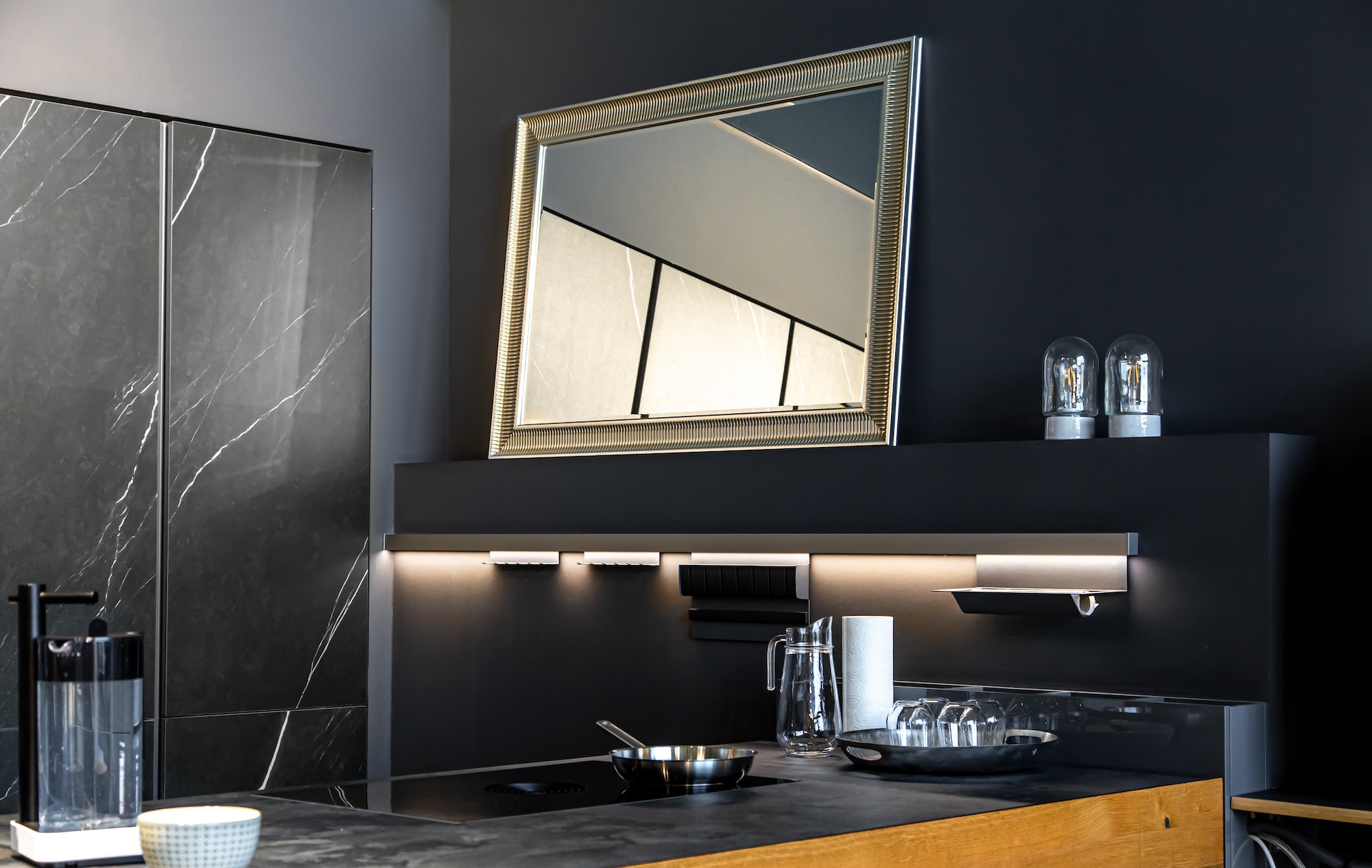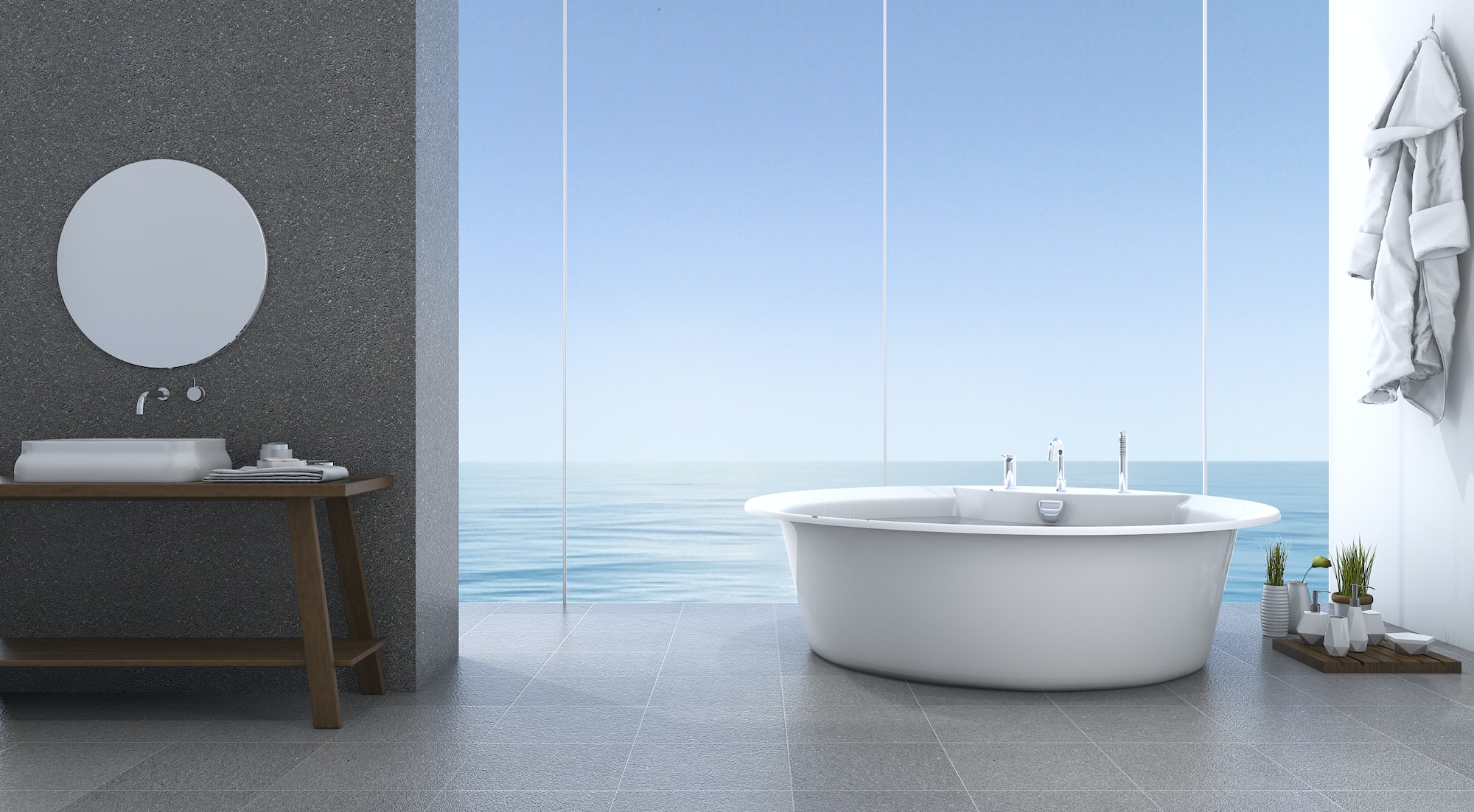You need to be careful in choosing colors for your living room because there is a great effect made by colors.
If you want to keep your living room simple but modern, using white as the main color to beautify its interior is a great idea. White interior design is perfect for you who want to have a bright room with a natural appearance. In order to remove its plain look, painting the walls black is recommended.
Black walls in white interior design can be an option as an accent wall. Why black? It is an awesome color that can open up your space, creating a larger feeling, making it airer, and creating an inviting feeling as well.
We have gathered some modern living room ideas in black walls and white interior design below to help you get more inspiration for your own living room.
1. Portland Hilltop Interiors by Olson Kundig
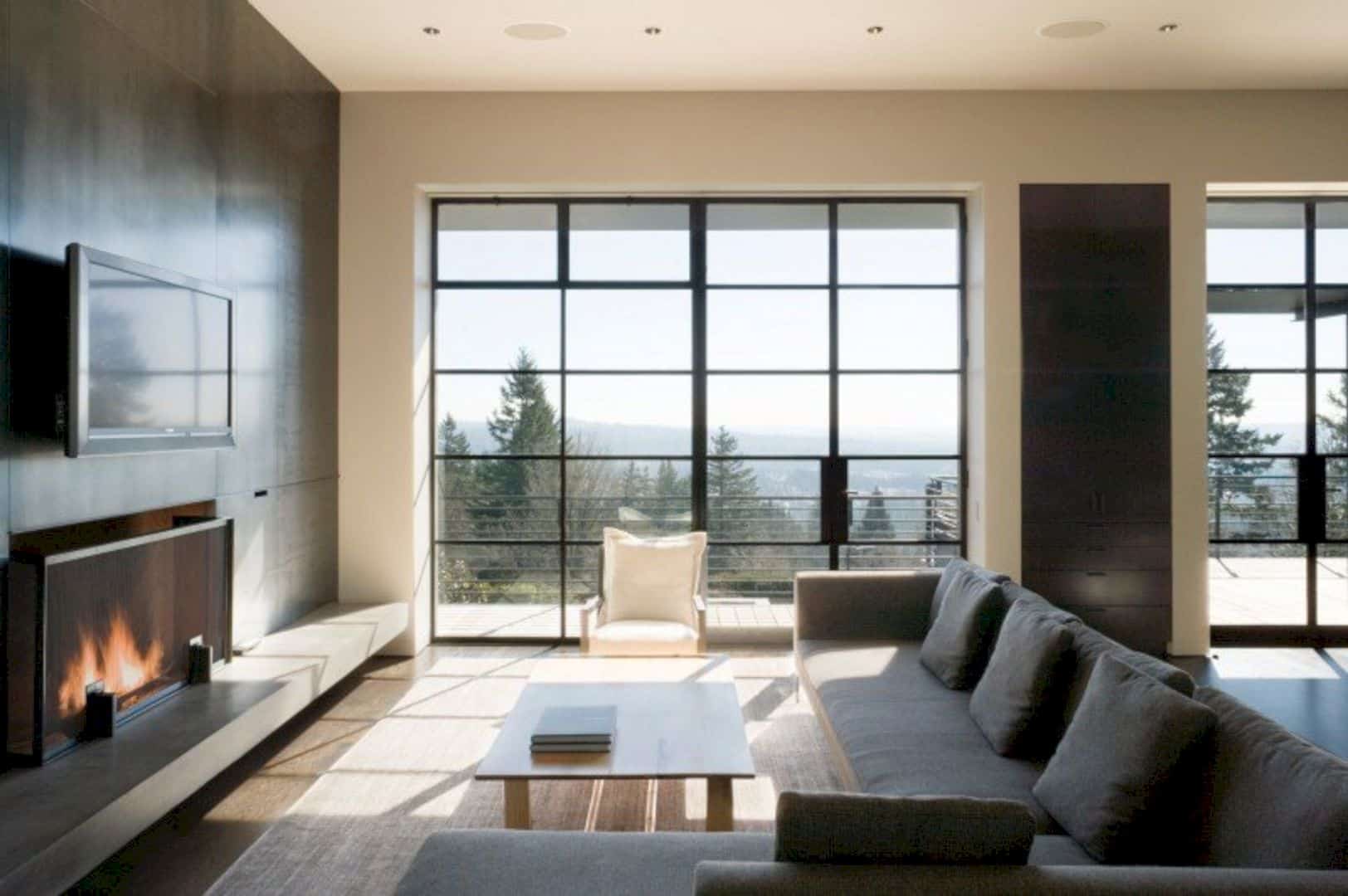
This modern living room idea in black walls and white interior design is perfect for you who love simplicity. Portland Hilltop Interiors by Olson Kundig has a white interior design in its living room beautified with a black wall behind the TV. In order to get natural light, the large glass walls allow warm sunlight to enter the room easily.
Photography: Olson Kundig
2. Los Altos New Residence by Outer Space Landscape Architects and Klopf Architecture
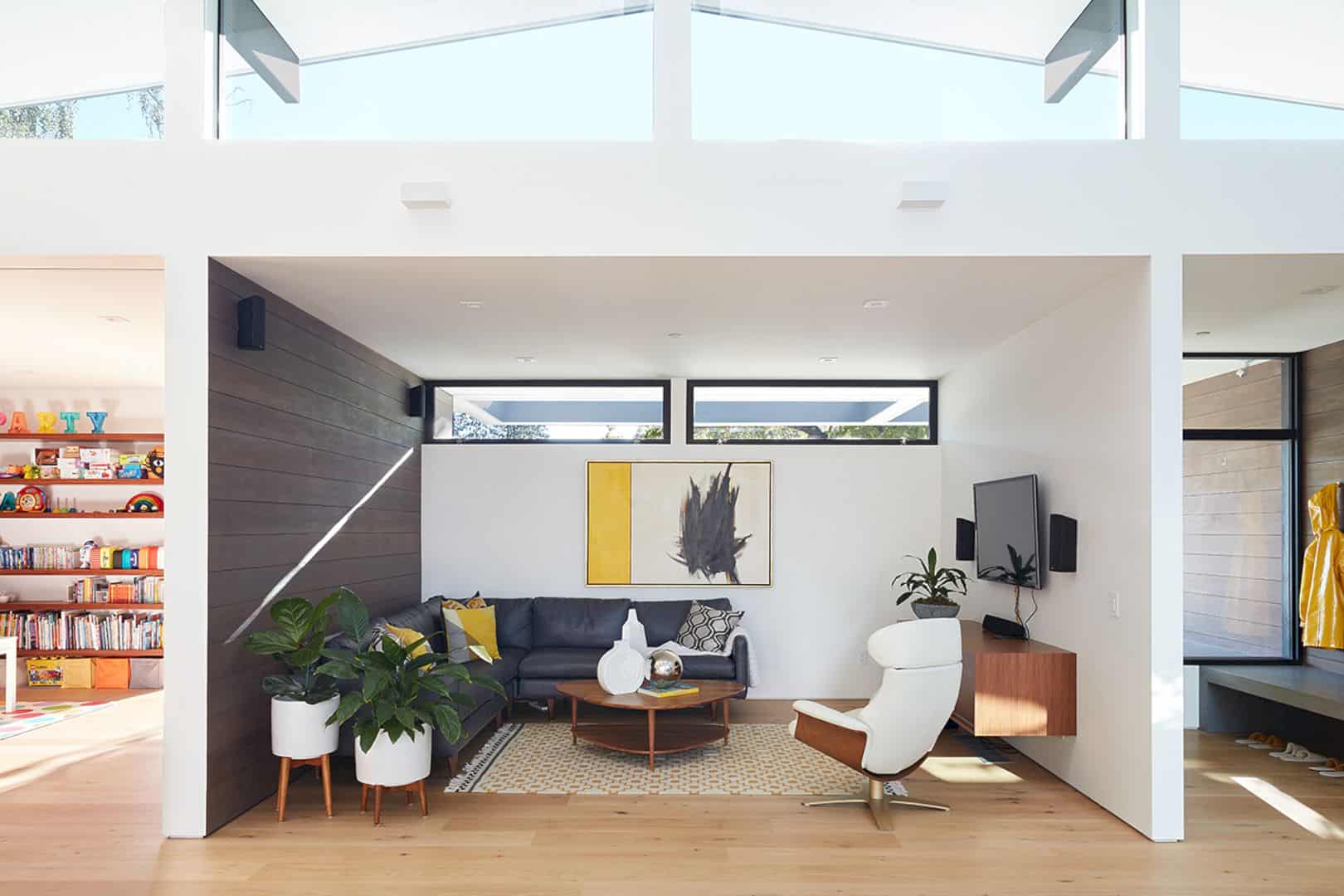
Los Altos New Residence by Outer Space Landscape Architects and Klopf Architecture is a modern house that has a white interior design in its living room accented with a black wall. The presence of a black sofa matches well with this black wall. For a natural look, pots of greenery and wooden furniture are added.
Photographer: Mariko Reed
3. Canopy House by Rob Paulus Architects
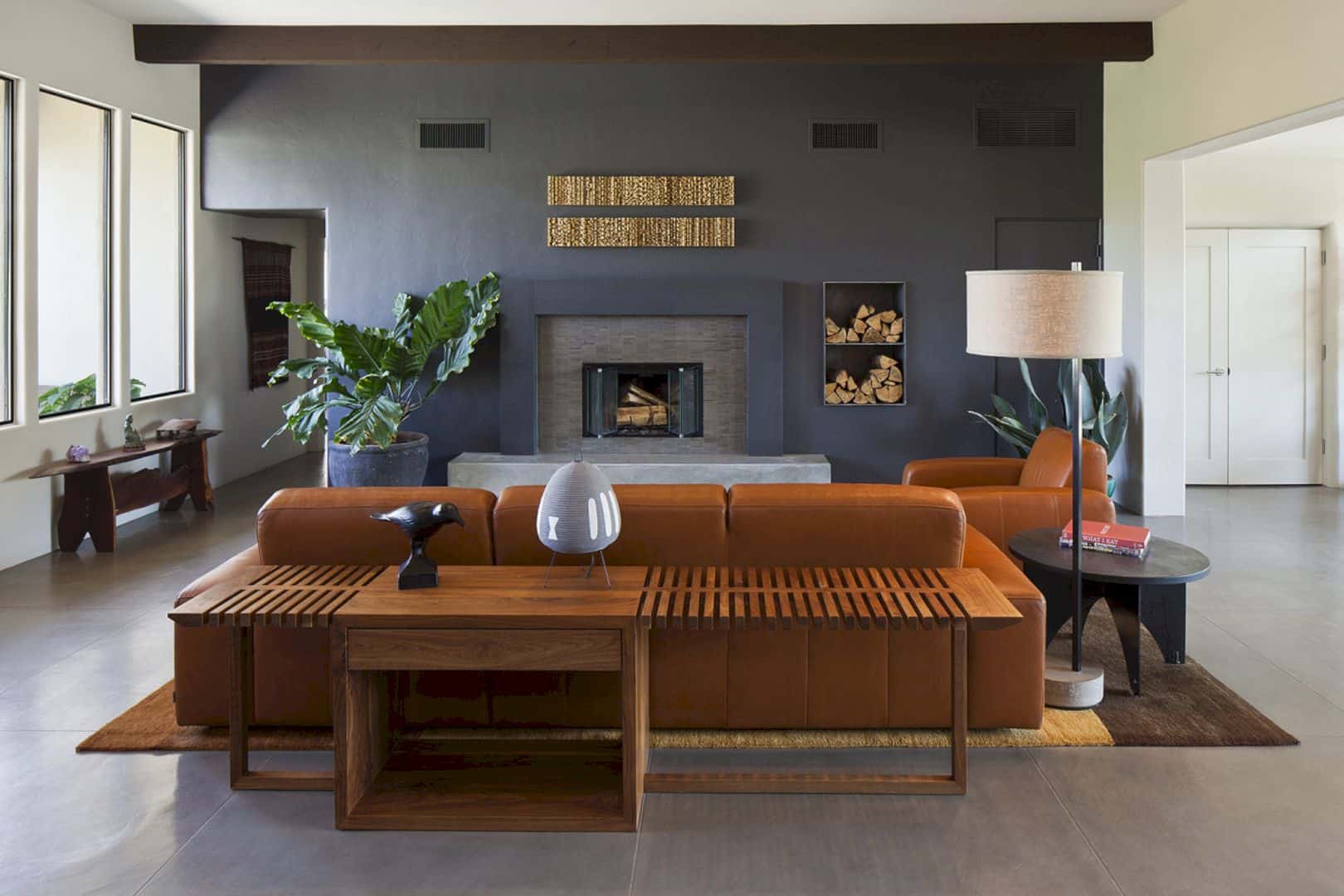
If you want to have something different in your living room, try this modern living room idea in black walls and a white interior design. Canopy House by Rob Paulus Architects uses the black wall in its living room to highlight the whole interior design. The leather sofa is on another level, complete with a large warm rug and a wooden table behind the sofa.
Photography: Rob Paulus Architects
4. Hamptons Bungalow by Young Projects
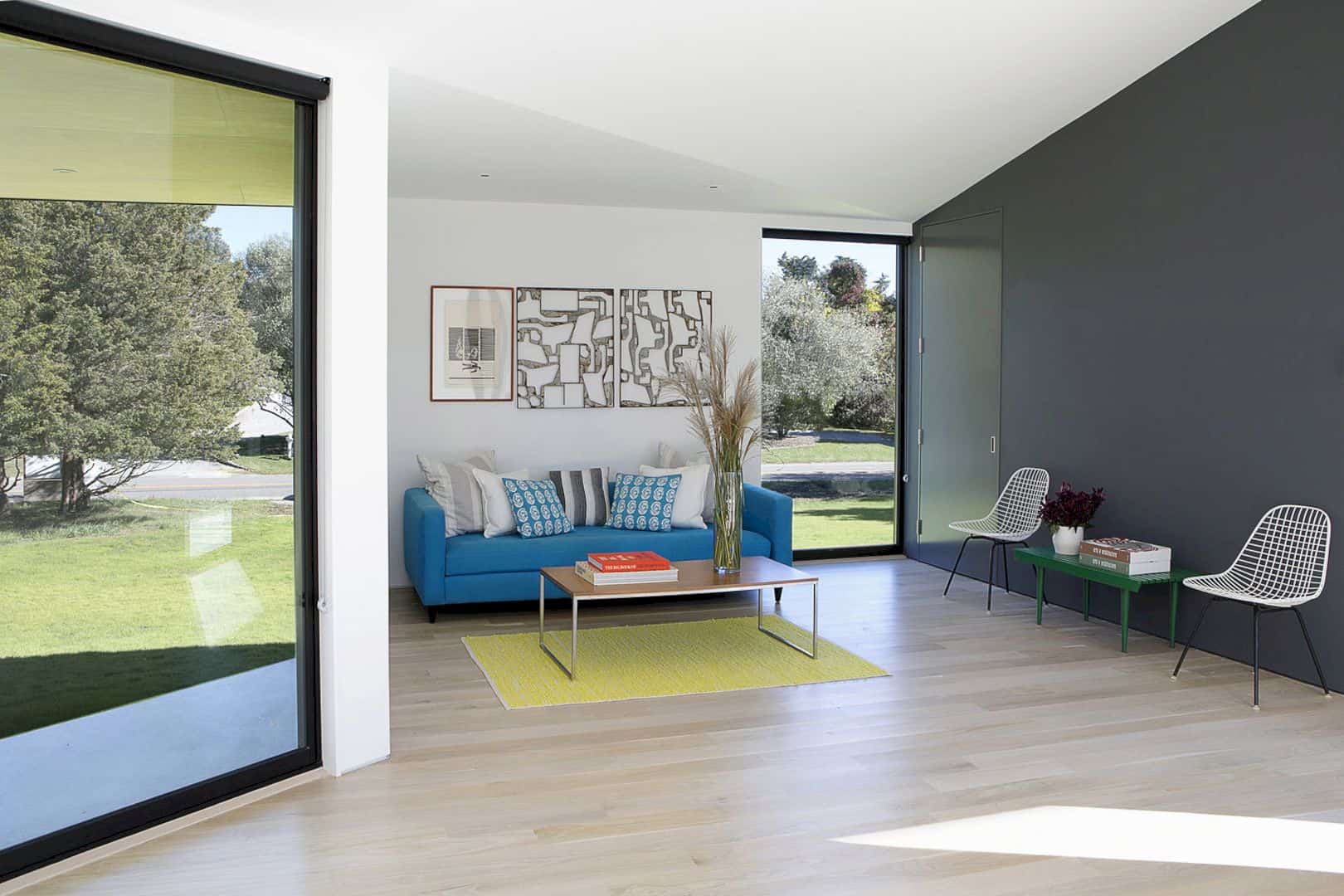
Hamptons Bungalow by Young Projects uses a black wall to beautify its living room which has a mid-century modern interior in white. The result is a stylish living room interior with an airy and inviting feeling. The blue sofa is used as a furniture statement.
Photographer: Costas Picadas
5. Dom Sokolow by Widawscy Studio Architektury
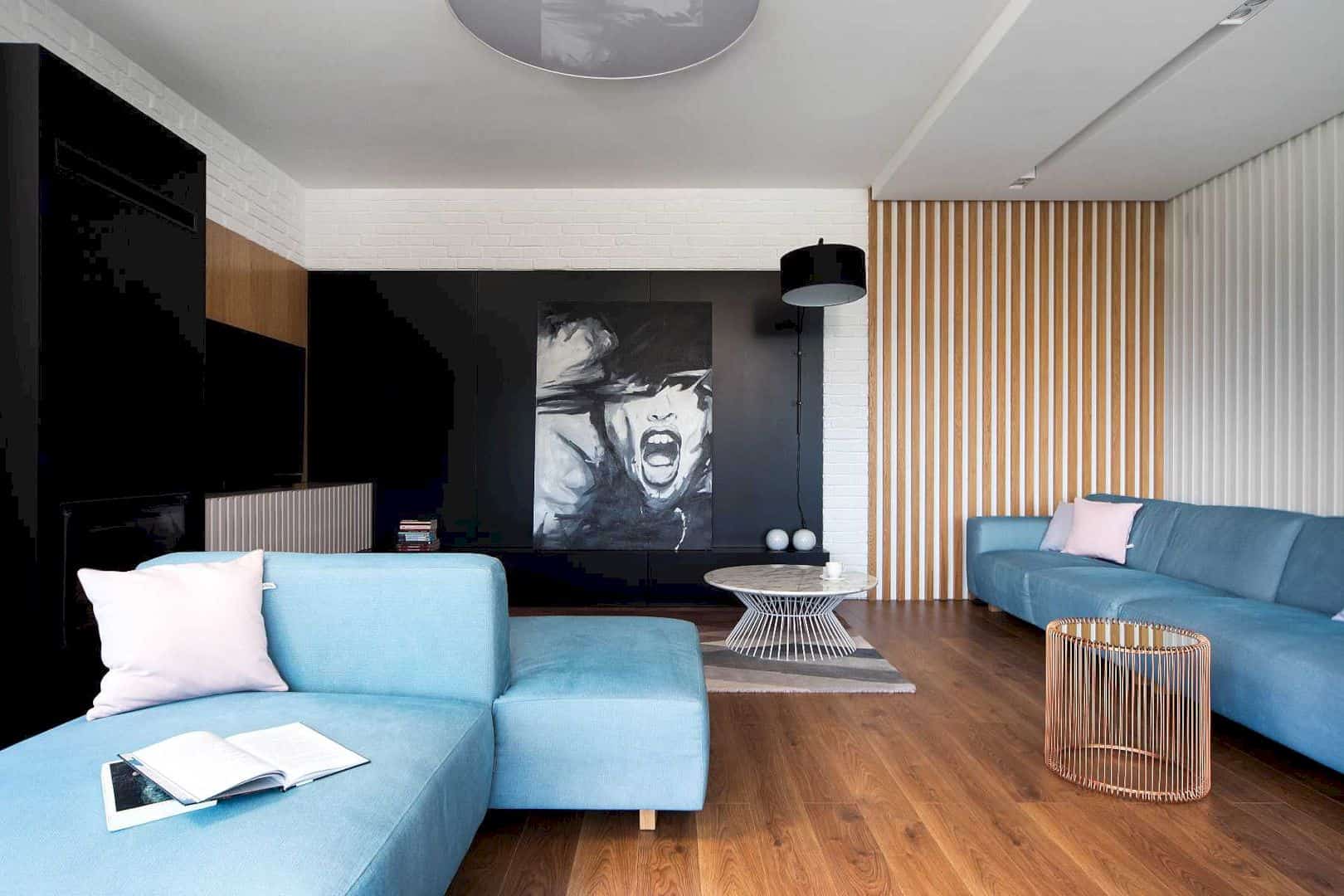
The modern living room idea in black walls and a white interior design in Dom Sokolow by Widawscy Studio Architektury is perfect for you who live in an apartment. The black walls in this apartment’s living room can create an inviting and airy feeling, making the room feels larger than it seems.
Photographer: TOMASZ BORUCKI
6. Cap St-Martin House by Bourgeois Lechasseur Architectes
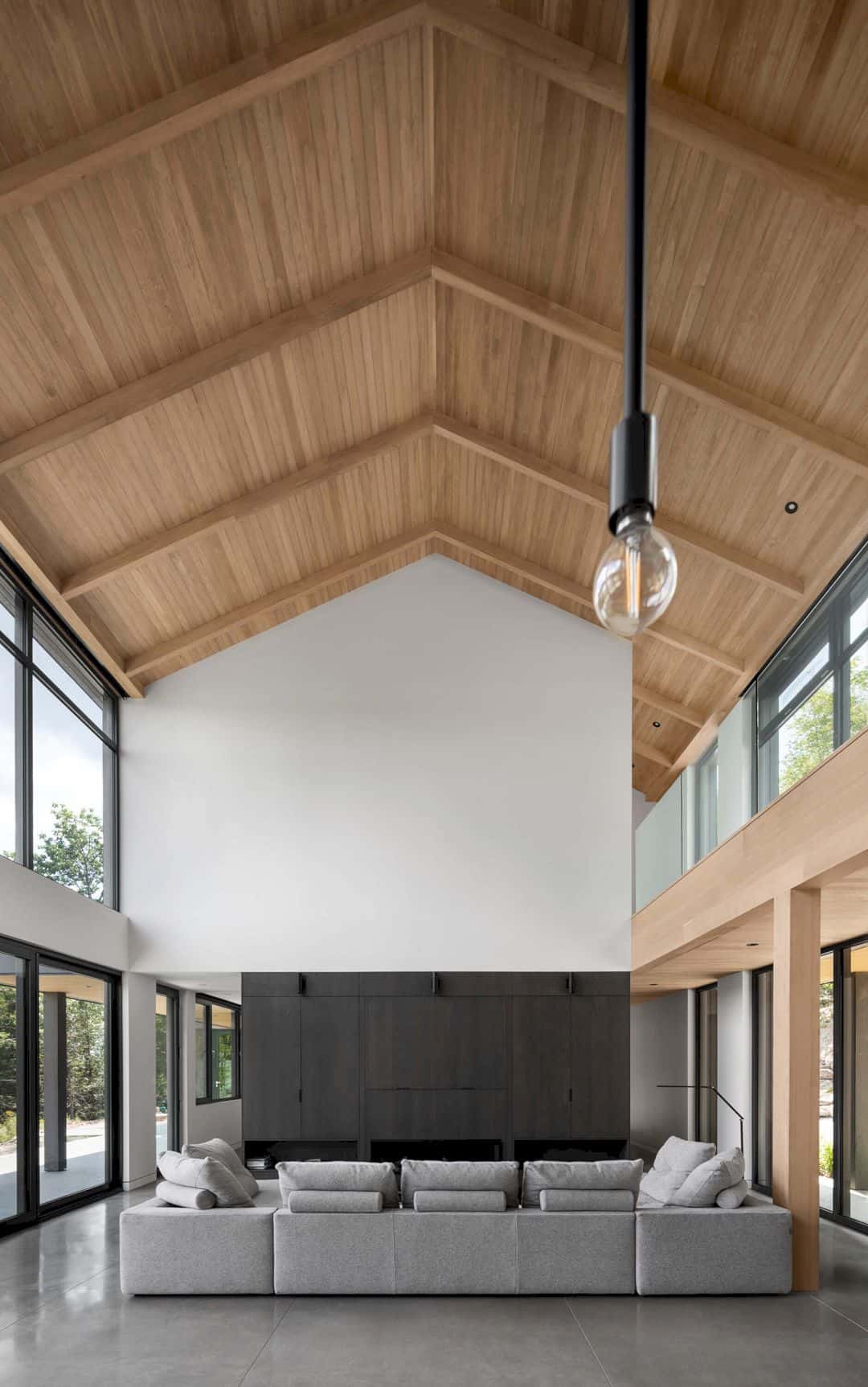
Cap St-Martin House by Bourgeois Lechasseur Architectes has a black wall in its living room as an accent for the room’s white interior design. The presence of this black wall is completed with a big grey sofa where both of which create a neutral look that is perfect for the house’s wooden structure.
Photographer: Adrien Williams
7. Bannerman House by Bijl Architecture
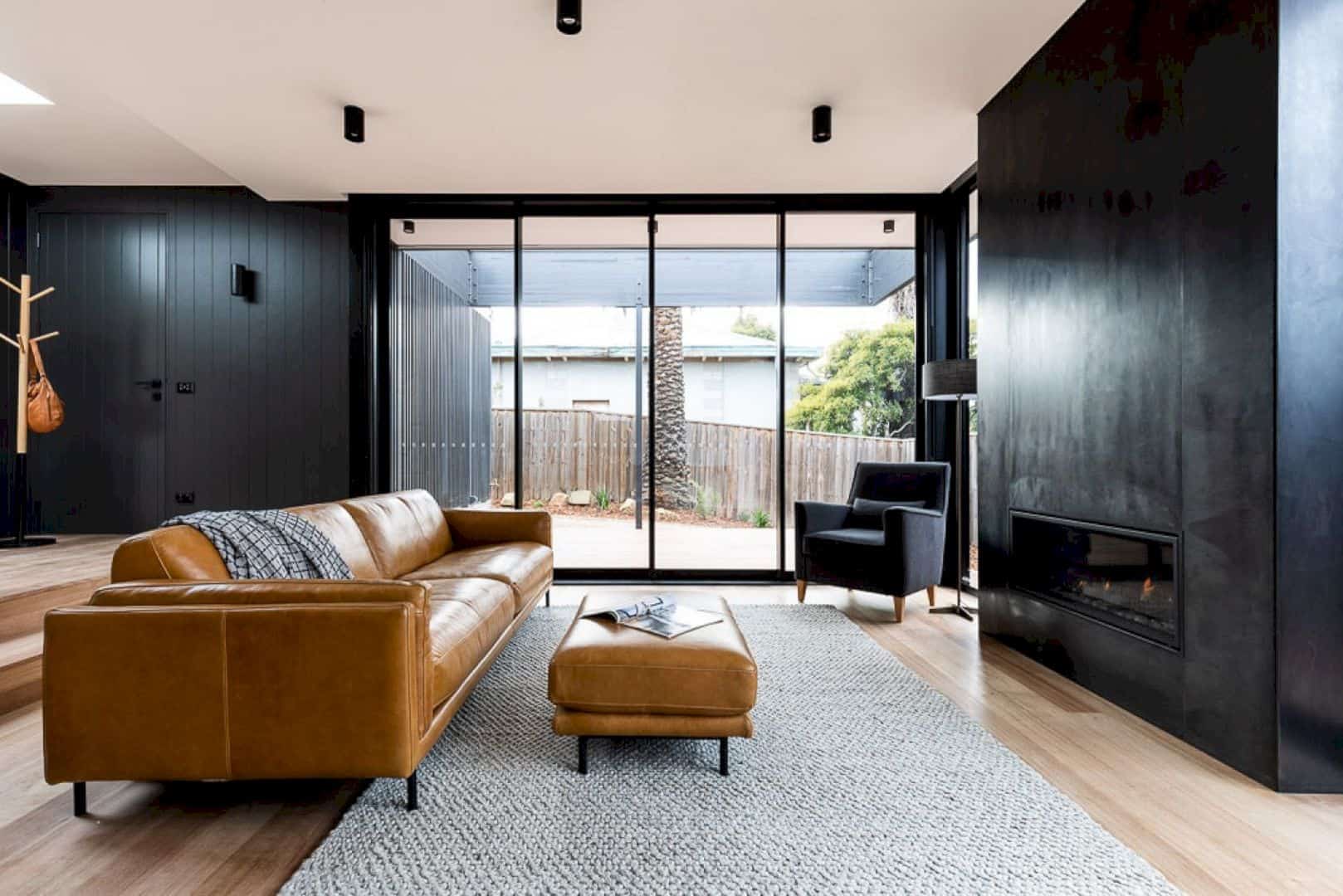
Bannerman House by Bijl Architecture is a unique heritage home that has a modern living room idea in black walls and a white interior design. The ceiling is beautified in white while the wooden floor gives a warmer atmosphere. The leather furniture is the statement furniture completed with a warm grey rug.
Photographer: Adam Gibson

